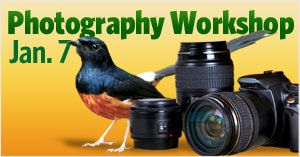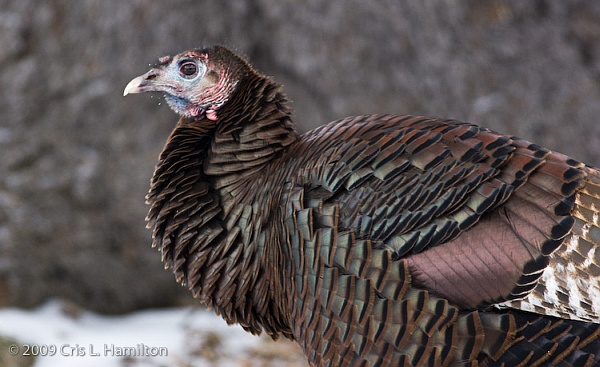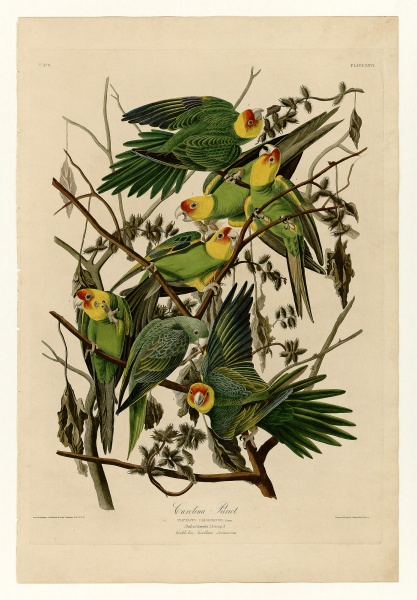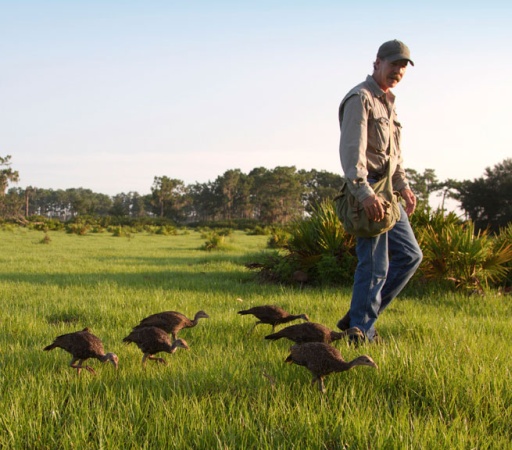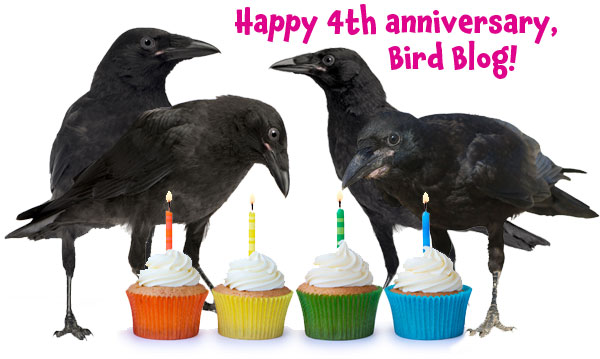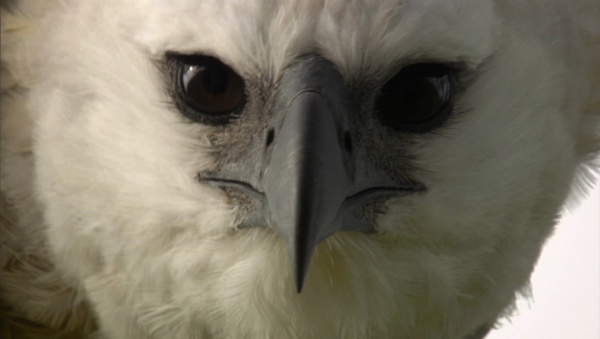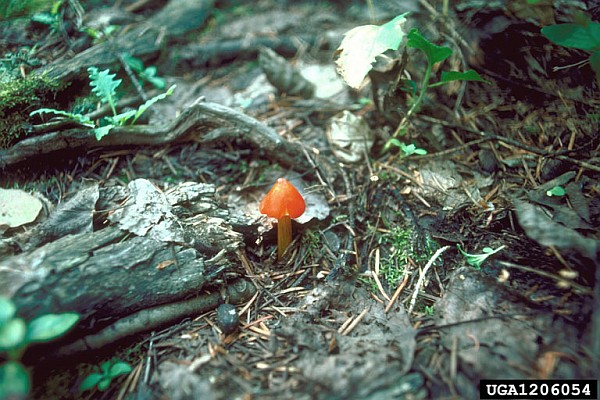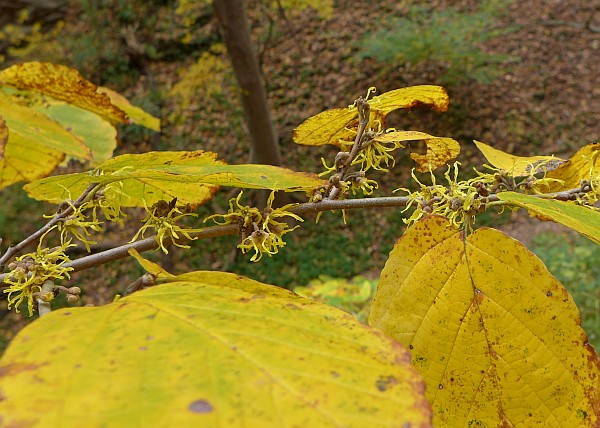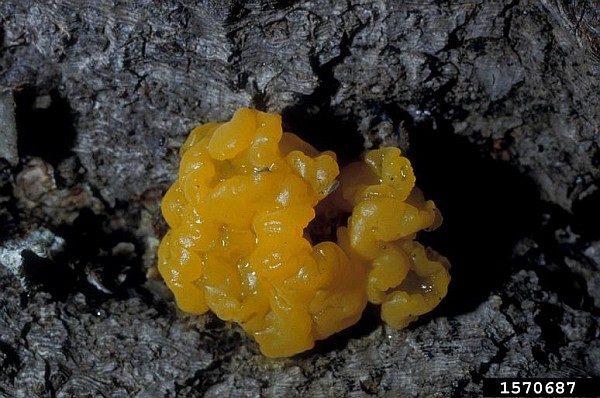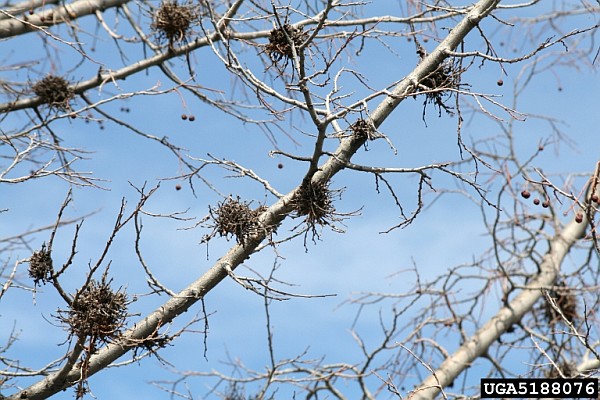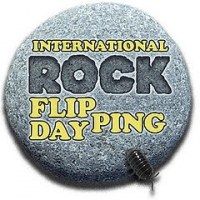
Unnoticed among the 10th Anniversary commemorations of 9/11 is this: Today is also International Rock Flipping Day (IRFD).
Back in 2007 Dave Bonta and Bev Wigney started “Rock Flipping Day” as a blog carnival — a day in which to look for and blog about Nature in an unlikely place. It immediately became an international event when bloggers from four continents posted their findings under rocks around the world. Susannah Anderson (Wanderin’ Weeta) now organizes the event on the second Sunday of September. In 2011 it happens to coincide with an important day in U.S. history.
I’ve participated in IRFD since 2009 so I decided to flip a rock despite today’s somber tone.
My chosen rock is in our city backyard in Pittsburgh, Pennsylvania. It’s not actually a rock but a large concrete paving tile in the alley behind our back fence. My husband helped by lifting one end while I snapped away with the camera. You can see his feet as he holds up the slab.
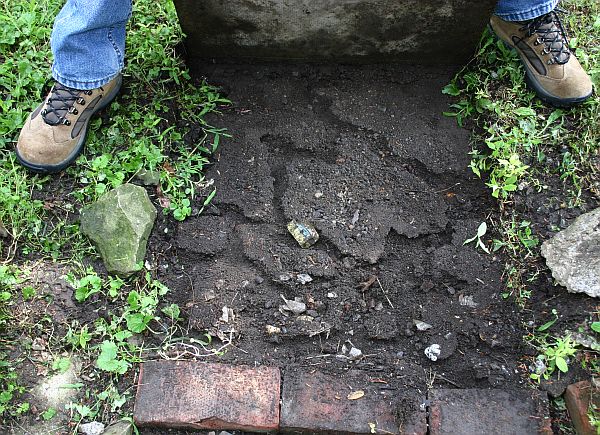
What have we here?
Tunnels and trash.
The tunnels are easy to see. Inside the tunnels are two bits of trash, positioned as if dragged there by the tunnel-maker. Only one is visible in the picture. The square in the center of the photo that’s faintly yellow with a turquoise stripe is a piece of cellophane wrapper.
What lives in the city, makes tunnels, and pulls trash into them?
A gray-colored rodent with a naked tail. 🙁
I didn’t expect to find this. It’s creepy to think the tunnels were made by a rat right there behind my back fence, but what else could it be? The slab is in the alley where everyone keeps their garbage cans.
I have seen lots of wildlife in the City of Pittsburgh: hawks, owls, a bald eagle, groundhogs, raccoons, white-footed mice, deer, a red fox, even a toad. Just because I rarely see rats doesn’t mean they aren’t here.
Fortunately nothing moved under our rock and the tunnels don’t look recently used. Perhaps our “visitor” moved on when I stopped feeding the birds in the spring to keep away rodents this summer. Or maybe an owl or a red-tailed hawk ate him.
I can only hope!
Update: I did some research and I am very relieved! The tunnels are nowhere near large enough nor long enough to be rat tunnels. The tunnels under my rock are about 1″ in diameter and have straight-ways less than 6″ long. Rat tunnels are 3″ in diameter and 2 to 6 feet long. So the rock had a small rodent under it. Perhaps a mouse. I can cope with that!
(photo by Kate St. John)
p.s. Here’s the list of other bloggers who flipped a rock this year:
A Roving I will Go
Rebecca in the Woods
Fertanish Chatter
Bug Safari
Growing with Science Blog
Wild About Ants
Powell River Books Blog
Meandering Washington
Cicero Sings
Via Negativa
Mainly Mongoose
Chicken Spaghetti
Wanderin’ Weeta
Rock, Paper, Lizard. (The Interpreter)
_Cabin Girl
From Twitter: At Rattan Creek ff. From @gjesse on Twitter
From Flickr: Flickr group
